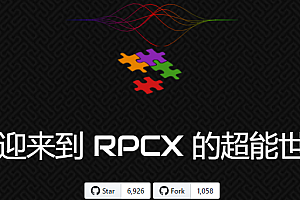This issue is recommended is an ant experience technology open source graph editing engine – X6.

X6 is a graph editing engine under AntV, which provides a series of out-of-the-box interactive components and easy-to-use node customization capabilities, which facilitates us to quickly build DAG diagrams, ER diagrams, flow charts and other applications.
Features
- Easy to customize: support to customize node styles and interactions using SVG/HTML/React/Vue
- Out of the box: built-in 10+ graph editing companion extensions, such as box selection, alignment lines, minimap, etc.
- Data-driven: Based on MVC architecture, users focus more on data logic and business logic
- Event-driven: a complete event system that can listen for any event occurring within the chart
Install X6
Install X6 via npm or yarn.
# npm
$ npm install @antv/x6 --save
# yarn
$ yarn add @antv/x6Once installed, use import or require to reference it.
import { Graph } from '@antv/x6'; If imported directly via a script tag, you can use one of three CDNS and default to returning the latest version of X6:
- https://unpkg.com/@antv/x6/dist/x6.js
- https://cdn.jsdelivr.net/npm/@antv/x6/dist/x6.js
< li data – track = “70” > https://cdnjs.cloudflare.com/ajax/libs/antv-x6/1.3.20/x6.js (do not support for the latest version) < / li >
< script src="https://unpkg.com/@antv/x6/dist/x6.js"> < /script> For production environments, it’s recommended to use an explicit version number to avoid unexpected breaking with a new version:
- https://unpkg.com/@antv/x6@1.1.1/dist/x6.js
- https://cdn.jsdelivr.net/npm/@antv/x6@1.1.1/dist/x6.js
- https://cdnjs.cloudflare.com/ajax/libs/antv-x6/1.1.1/x6.js
<script src="https://unpkg.com/@antv/x6@1.1.1/dist/x6.js"></script>使用X6
1 Create the container
Creates a container on the page for the X6 plot, which can be a div tag.
< div id="container"> < /div> 2 Prepare data
X6 supports JSON data, and the object needs to have nodes and edges fields, which are represented by arrays, respectively:
const data = {
// node
nodes: [
{
id: 'node1', // String,Optional, unique identification of the node
x: 40, // Number,Required, the x value of the node position
y: 40, // Number,Required, the y value of the node position
width: 80, // Number,Optional, width value for node size
height: 40, // Number,Optional, node-size height
label: 'hello', // String,Node tags
},
{
id: 'node2', // String,Unique identification of the node
x: 160, // Number,Required, the x value of the node position
y: 180, // Number,Required, the y value of the node position
width: 80, // Number,Optional, width value for node size
height: 40, // Number,Optional, node-size height
label: 'world', // String,Node tags
},
],
// edge
edges: [
{
source: 'node1', // String,Must, the starting node id
target: 'node2', // String,Must, target node id
},
],
};3 Render canvas
First, we need to create a Graph object and specify a drawing container for it on the page, usually specifying the size of the canvas.
import { Graph } from '@antv/x6';
// Exposed X6 global variables when introduced using CDN Span >
// const { Graph } = X6
const graph = new Graph({
container: document.getElementById('container'),
width: 800,
height: 600,
});If introduced via script tags, our Graph object is mounted below the X6 global variable:
<script src="https://unpkg.com/@antv/x6/dist/x6.js"></script>
<script>
const graph = new X6.Graph({
container: document.getElementById('container'),
width: 800,
height: 600,
});
</script>Then, we can use the graph we just created to render our nodes and edges.
graph.fromJSON(data)At this point, we have the simplest Hello –> World example:

4 Background and grid
Next, let’s set a background color and mesh for the canvas, and also support background image, mesh type, etc.
import { Graph } from '@antv/x6';
const graph = new Graph({
container: document.getElementById('container'),
width: 800,
height: 600,
background: {
color: '#fffbe6', // Set the background color of the canvas
},
grid: {
size: 10, // Mesh size 10px
visible: true, // Render a grid background
},
});
class=”pgc-h-arrow-right” data-track=”75″>


Artificial intelligence modeling DAG


Mind map

BPMN


ELK


UML

Expand/collapse tree
—END—
Open source protocol: MIT











